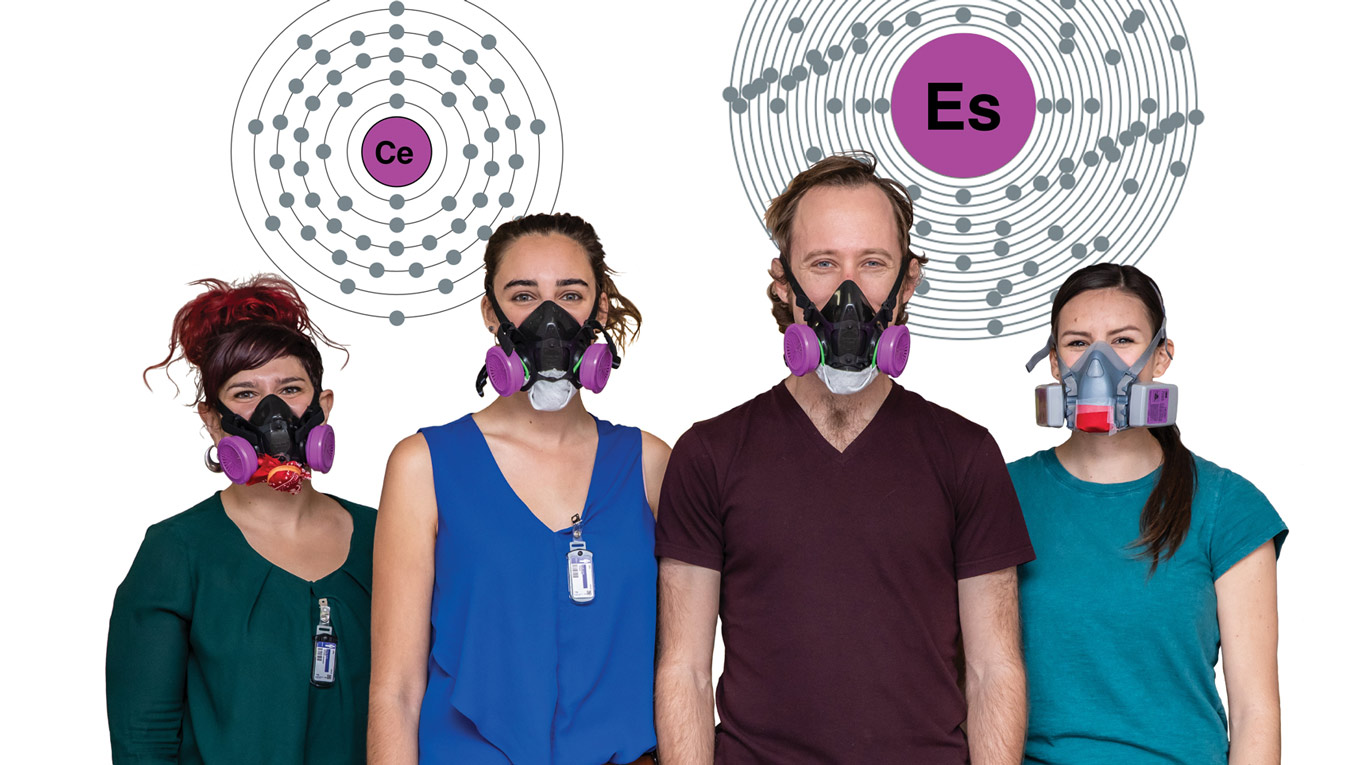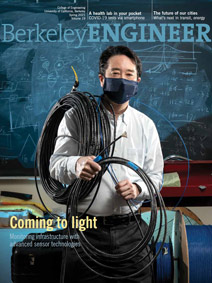 Photo by Marilyn Sargent/Berkeley Lab
Photo by Marilyn Sargent/Berkeley LabIt’s elemental
New research coming from nuclear engineering assistant professor Rebecca Abergel — working in collaboration with colleagues from Berkeley Engineering, Berkeley Lab, Los Alamos National Lab and other institutions — could lead to better cancer treatments as well as improve our fundamental knowledge about a little-known element.
In an advance that could ultimately transform therapies for certain cancers, Abergel and her fellow researchers developed new methods for the large-scale production, purification and use of radioisotope cerium-134. The team was successful in using cerium-134 as a new material for targeted alpha therapy (TAT), a treatment in which alpha-emitting radioisotopes are guided to cancer cells by molecules such as antibodies, destroying the cancer cells but leaving healthy tissues unaffected. Other isotopes — including actinium-225 and thorium-227 — have been used for TAT, but researchers are unable to monitor where these drugs are going in patients, even with the use of positron emission tomography (PET). Now, by tuning the oxidation state of cerium-134 and encapsulating it in metal-binding molecules called chelators, the researchers showed that it, too, could be utilized for TAT, with the added benefit of being detectable through PET. This work could allow clinicians to watch a patient’s response to these targeted therapies in real time, as well as make such treatments more widely available.
In a second study, Abergel and another group of researchers reported the first measurements of einsteinium, otherwise known as atomic number 99, a synthetic element that is part of the actinide series on the periodic table. Because einsteinium is highly radioactive, rapidly decays and is difficult to work with, scientists have learned very little about it since its discovery in 1952. But the team, using just 200 nanograms of the element, were able to determine an einsteinium bond distance — a basic property that indicates the average distance between two bonded atoms — and found that it differs from what would be expected based on studies with other actinides. Their findings could make it easier to purify einsteinium in the future, study other elements in the actinide series and even discover new elements.
Learn more:
- Scientists recruit new atomic heavyweights in targeted fight against cancer (Berkeley Lab)
- Discoveries at the edge of the periodic table: First ever measurements of einsteinium (Berkeley Lab)

